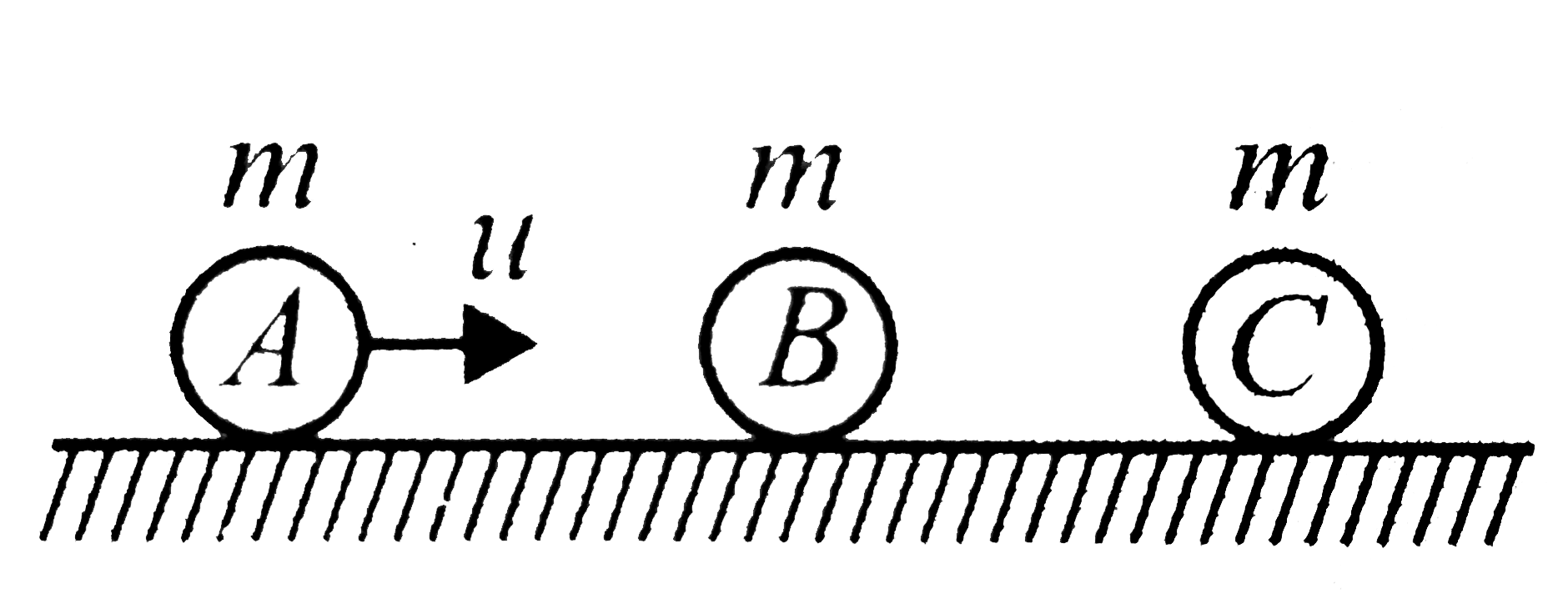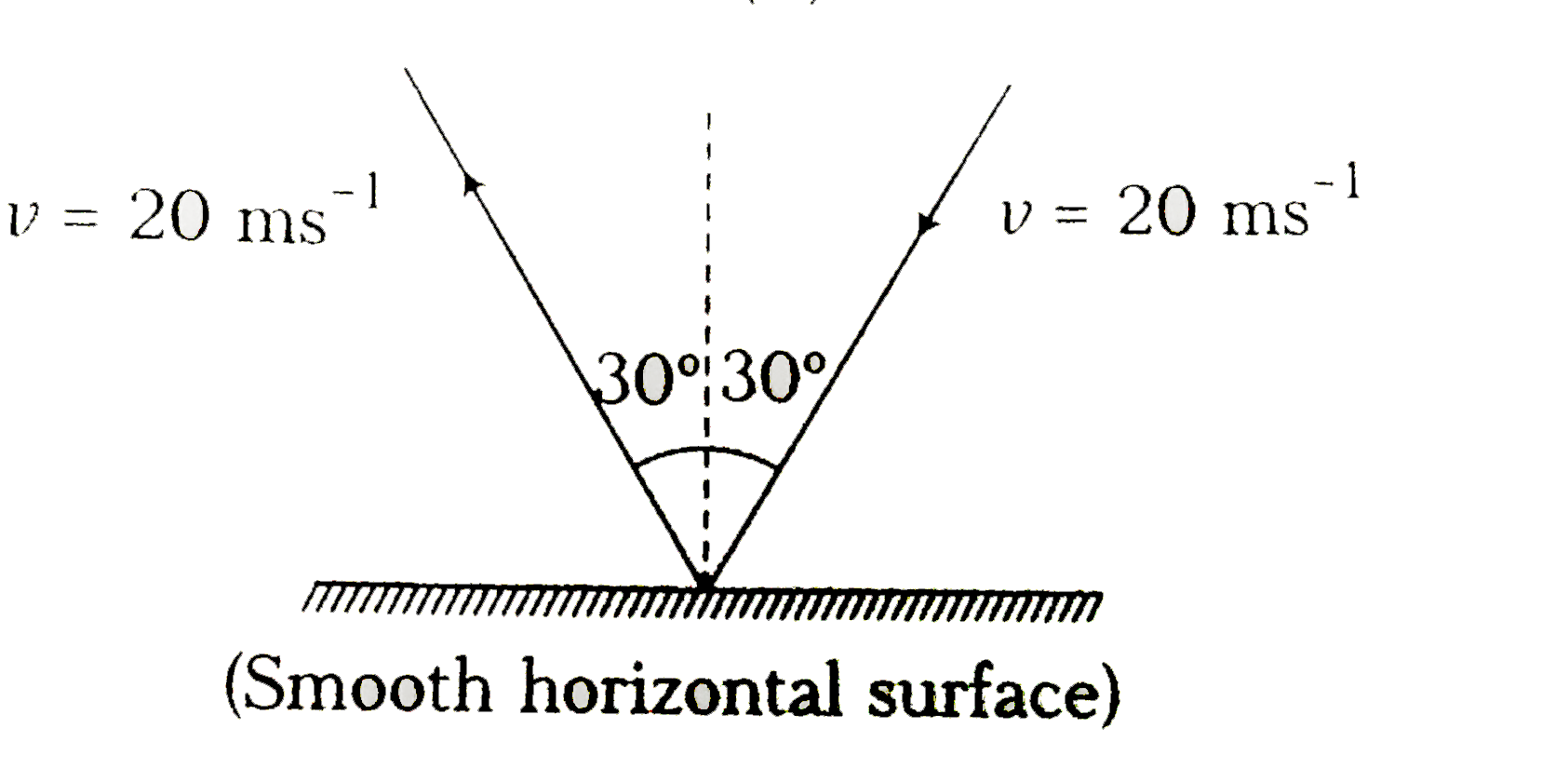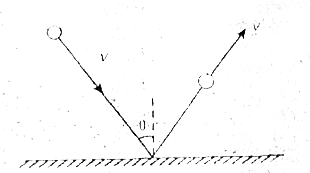Three balls A,B and C(mA=mC=4mB) are placed onn a smooth horizontal surface. Ball B collides with ball C with an initial velocity v as shown in figure. Find the total number of collision betwenent the balls (all collisions are elastic).

The correct Answer is:2
For the first collision e=1,v=v1+v2

⇒v2=v−v1
By momentum conservation
mBv=−mBv1+mCv2
mBv=−mBv1+4mBv2
v2=v1+v4
From eqn i and ii, v1=35v and v225v
For the second collision e=1

v1=v′1+v3⇒v3=v1−v1'()
By momentum conservation −mBv1=mBv′1−mAv3
or −mBv1=mBv′1−4mBv3 (∵mA=4mB)
v3=v′1+v14
from eqn iii and iv v′1=35v1(35v)=925v
Clearly 925v<25v
therefore B cannot collide with C for the second time.
Hence, the total number of collisions is 2.
Topper's Solved these Questions
- BOOK - CENGAGE PHYSICS ENGLISHCHAPTER - CENTRE OF MASSEXERCISE - Integer16videos
CENTRE OF MASS
- BOOK - CENGAGE PHYSICS ENGLISHCHAPTER - CENTRE OF MASSEXERCISE - Fill In The Blanks2videos
CENTRE OF MASS
- BOOK - CENGAGE PHYSICS ENGLISHCHAPTER - CENTRE OF MASSEXERCISE - Assertion - Reasoning2videos
CENTRE OF MASS
- BOOK - CENGAGE PHYSICS ENGLISHCHAPTER - CALORIMETRYEXERCISE - Solved Example13videos
CALORIMETRY
- BOOK - CENGAGE PHYSICS ENGLISHCHAPTER - DIMENSIONS & MEASUREMENTEXERCISE - Integer2videos
DIMENSIONS & MEASUREMENT
Similar Questions
Three balls A, B and C are placed on a smooth horizontal surface. Given that mA=mC=4mB. Ball B collides with ball C with an initial velocity v as shown in figure. Find the total number of collisions between the balls. All collisions are elastic.
 View Solution
View SolutionA glass ball collides with a smooth horizontal surface (xz plane) with a velocity V=ai−bj. If the coefficient of restitution of collision be e, the velocity of the ball just after the collision will be
View SolutionA ball A of mass M collides elastically with a similar ball B at rest as shown in figure. Initially velocity of ball A is u m/s. After collision,
 View Solution
View SolutionTwo balls marked 1 and 2 of the same mass m and a third ball marked 3 of mass M are arranged over a smooth horizontal surface as shown in the figure. Ball 1 moves with a velocity v1 towards ball 2. All collisions are assumed to be elastic. If M<m, the number of collisions between the balls will be.
 View Solution
View SolutionTwo balls marked 1 and 2 of the same mass m and a third ball marked 3 of mass M are arranged over a smooth horizontal surface as shown in the figure. Ball 1 moves with a velocity v1 towards ball 2. All collisions are assumed to be elastic. If M<m, the number of collisions between the balls will be.
 View Solution
View SolutionThree balls A,B and C of same mass m are placed on a frictionless horizontal plane in a straight line as shown. Ball A is moved with velocity u towards the middle ball B. If all the collisions are elastic, find the final velocities of all the balls.
 View Solution
View SolutionA ball is moving with speed 20ms−2 collides with a smooth surface as shown in figure. The magnitude of change in velocity of the ball will be
 View Solution
View SolutionA ball is moving with speed 20ms−2 collides with a smooth surface as shown in figure. The magnitude of change in velocity of the ball will be
 View Solution
View SolutionThree balls A,B and C each of mass m and same size,are placed along same line on smooth horizontal surface.A is given a velocity u towards B as shown.If coefficient of restitution for collision between A and B is 12 and between B and C is 13.Assuming all the collisions to be head on choose the correct options: (A) Final velocity of A is u4, (B) Final velocity of B is u4 (C) Final velocity of C is u2, (D) Total energy loss is 516mu2
View SolutionA ball moving with speed v collides with a horizontal smooth surface at an angle θ with normal to surface as shown in figure. If coefficient of restitution of collision is e, then find v'
 View Solution
View Solution

